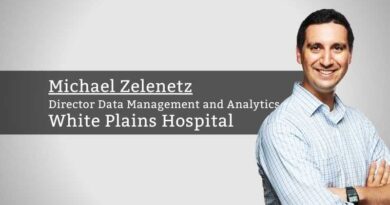Infrastructure Needed For Cloud EMR
By Derek D. Drawhorn, Associate VP of IT Infrastructure, University of Texas Health Science Center at Houston
Migration to the cloud is an ever-present reality in most organizations. Healthcare is certainly no exception. Healthcare was not as fast to adopt cloud strategies mainly due to the stringent requirements to safeguard data and be able to show compliance with HIPAA and other state and federal regulations. An effective cloud strategy is a must for organizations who want to become more focused on patients and effectiveness in outcomes-based research.
It’s important to understand on large and complex applications that not everything which is required is necessarily a cloud resource. In the case of an electronic medical record (EMR), there are many services which help create a patient’s medical record, not all of which can be abstracted in the cloud with a vendor-provided resource. While the EMR vendor will provide a robust experience for physicians and patients, getting the data from your premises location into the EMR in the cloud still requires a hefty investment in on-premise infrastructure.
With more than 2,000 clinicians, my organization is engaged in the largest and costliest project ever next to constructing new buildings. What is the project? We are migrating from an on-premise implementation of an EMR to a cloud-hosted EMR with a different vendor. As an academic health science center, we are primarily dedicated to outpatient services and advancing health science careers through six distinct graduate-level schools in the health sciences.
As the decision to migrate to a cloud EMR emerged, people at various levels in the organization started to shave off large costs associated with things such as running a data center, maintenance software, personnel, and other expenses. It came as a surprise to many of us that going to the cloud is not always as simple as standing down all your on-premises infrastructure.
Our current EMR, and its many tertiary systems which feed into it, require more than 1,000 servers spread across multiple data centers with advanced real-time failover clustering technologies. The expense to maintain this environment, regardless of the EMR software licensing costs, is immense in hardware, software, advanced private fiber-optic networks, and personnel. The migration to the cloud is an obvious choice for an EMR as you get to invest less in local infrastructure and turn large capital investments into a recurring and known operational expense.
In our example, we will be standing down more than 850 physical and virtual servers currently providing access to our on-premise EMR. These servers provide all user entry and backend services such as reporting and analytics. As the project was just getting started, we thought we might not be standing up any additional new servers and services, but that changed quickly into the first set of meetings. It started simply enough with how users will login to the cloud-hosted EMR. It seems simple enough, but you may need to extend your login directory servers into your cloud-hosted EMR datacenters in many cases. In fact, when it comes to users, you may be responsible for all account and role provisioning, which is then synchronized to your cloud-hosted EMR. All of this could require new authentication and directory system, which you do not have deployed today, which was the case for us.
Don’t forget you need to feed your EMR from many connected systems you have on-premises. Those systems remain and you will have to develop new routines to interface these into your cloud EMR. These could be laboratory and imaging systems from varying modalities. Most cloud EMR vendors do not handle electronic FAX directly, so you may have to extend, replace, or modify your existing FAX product to interface with your new product. The last item may be one of the most mundane but vitally important to be certain to understand early, printing. As much as we like to believe it’s an all-electronic world, physical printing is still a standard practice in most outpatient clinics and hospital wards. This printing includes everything from standard reports to labels and patient armbands. Getting your print jobs from your cloud-hosted EMR down to your local printers will require new infrastructure and lots of planning before production and after go-live.
You may also find yourself developing custom automation scripts for the movement of lots of data between systems that you did not have to perform before migrating to the cloud. We have currently created more than 150 automation routines which accomplish certain tasks, such as moving an incoming FAX from the FAX server to a location to be ingested by our patient documentation system, which can then be viewed by the physician in the EMR.
My organization is set to go-live with our cloud-hosted EMR in May 2021, and here are some observations I think are important for anyone else looking to make a similar move.
- Make no assumptions plan on asking your cloud EMR vendor a lot (LOT!) of questions. In large and complex applications such as EMR, many things are included, but not everything. You will need to formulate many questions around your current environment and processes and make sure you fully understand your responsibilities before moving forward.
- Your TCO will be an estimate. If you have done even your best accounting homework, you will discover that your total cost of ownership is estimated. Many items come to light as the project planning starts with your cloud EMR vendor, which can derail your TCO in significant ways. Plan a fund reserve with a process to approve and track expenditures over a certain value. A good governance process can provide great value in this regard.
- Give yourself some time in the schedule. Much like your early TCO projections, your estimated timeline should be considered a starting point, but flexibility may be required. Depending on your vendor and access to specialized personnel resources required, you may have to alter your go-live dates. This can be especially difficult when you are already paying for an on-premises EMR and starting to incur costs for your cloud EMR. However, best to plan the extra time and go-live with the best product.



